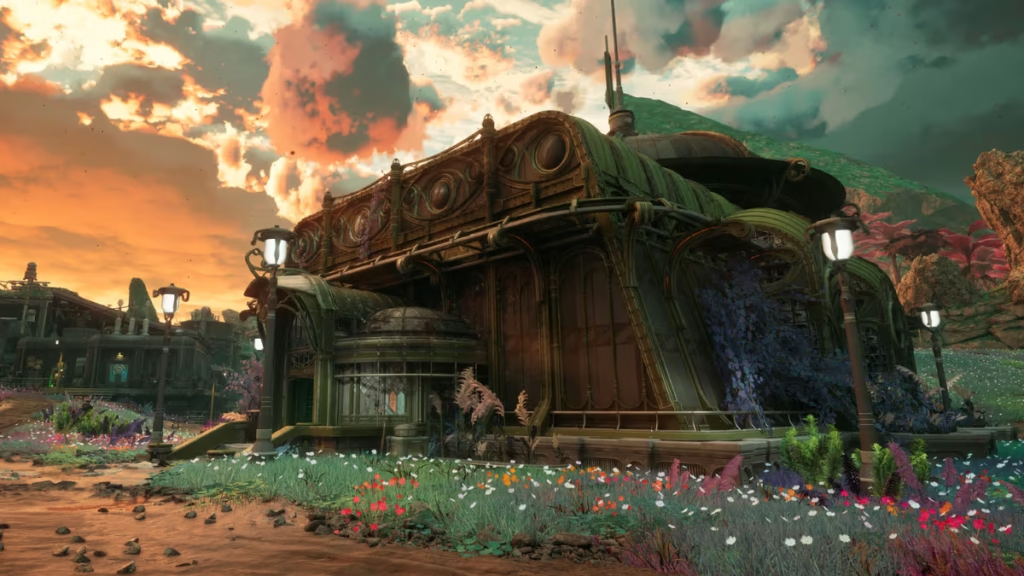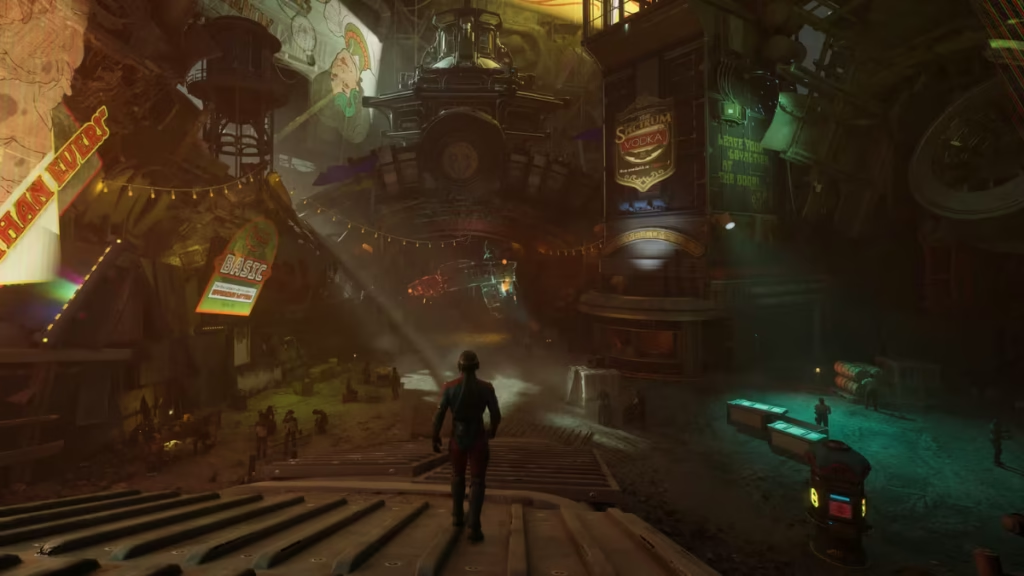Obsidian Entertainment has always enjoyed slipping clever nods to classic RPGs into its worlds, and The Outer Worlds 2 continues that tradition with a moment that Skyrim fans will recognize instantly. A seemingly ordinary interaction with a courier becomes one of the game’s most obvious — and funniest — Easter eggs for anyone who spent hours roaming Tamriel.

How The Outer Worlds 2 References Skyrim’s Courier Line
During your time on Paradise Island, you may encounter Order Courier Acosta, an operative for the eccentric, knowledge-obsessed Order of the Ascendant. After completing a main quest and returning to the landing pad, Acosta approaches you with a formal tone and hands over an important message.
What catches players off guard is the phrasing. His delivery mirrors the iconic encounters with Skyrim’s ever-present couriers — the ones who pop up in the middle of the wilderness to drop inheritance letters, bounty notes, or the next breadcrumb in a questline. The Outer Worlds 2 clearly knows exactly what it’s referencing, and the callback lands perfectly.

The moment works because it plays on a shared memory: the Skyrim courier’s abrupt, dead-serious hand-offs that always felt slightly out of place, yet became part of the game’s charm.
A Skyrim Callback Wrapped in Obsidian’s Humor
Skyrim’s couriers were polite, almost overly professional messengers who dutifully delivered “your hands only” notes regardless of your surroundings. In contrast, Courier Acosta keeps the formal attitude but adds the sarcastic edge that defines The Outer Worlds series.
Rather than showing up with the quiet confidence of his Skyrim counterparts, Acosta openly complains about your timing — chastising you for arriving “late” to a meeting you didn’t even know was scheduled. It’s a perfect blend of Elder Scrolls nostalgia and Obsidian’s trademark comedic bite.
Why This Easter Egg Fits The Outer Worlds 2 So Well
The Outer Worlds 2 sits in a lineage of RPGs shaped by Bethesda’s design philosophy. Open exploration, narrative branching, layered factions, and environmental storytelling all echo what made series like The Elder Scrolls, Fallout, and Starfield iconic. Obsidian, which previously built Fallout: New Vegas, understands this mold better than most.

However, The Outer Worlds 2 leans further into RPG depth than its first installment. It gives players more freedom in character expression, storyline manipulation, and consequence-driven decisions — an area Obsidian is famous for. That makes the Skyrim reference feel less like imitation and more like a playful wink at a genre the studio helped shape.
A Small Gag With Big Charm
The sequence with Courier Acosta is brief, but it stands out because of how deliberately it mirrors Skyrim’s tone. RPG players love when games acknowledge each other, especially when it’s delivered with respect and good humor. This is exactly the kind of Easter egg that longtime fans will remember — not because it changes the story, but because it celebrates gaming history.
Read More:
- The Outer Worlds 2 Console Commands & Mod Loader Installation Guide
- The Outer Worlds 2: How to Find de Vries’ Safe Room
- How to Upgrade Companions in The Outer Worlds 2 and Boost Their Abilities Fast
- All The Outer Worlds 2 Keybinds – Full PC and Controller Controls Guide
As The Outer Worlds 2 continues to impress critics and players with its sharp writing, branching quests, and creative world-building, these subtle nods showcase the studio’s awareness of the genre’s roots. The courier reference is a tiny moment, but it embodies exactly why Obsidian’s RPGs resonate: smart design, strong character work, and a sense of fun that never takes itself too seriously. Play Now!

